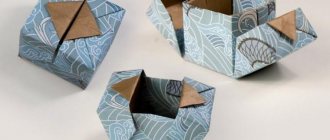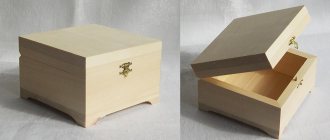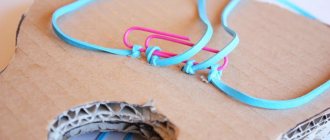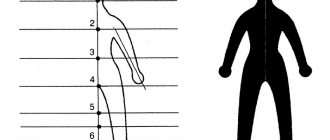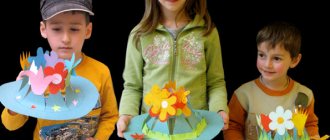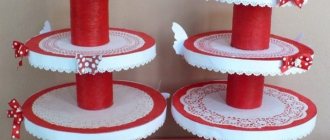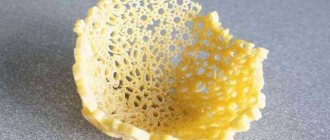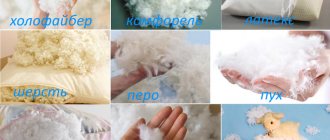Corrugated cardboard is a convenient and practical material for crafts. Recently it has become very popular, and this is quite justified, because corrugated cardboard is flexible, dense and holds its shape perfectly . The child will easily cope with this material and over time will learn to make amazing crafts.
You can find corrugated cardboard in any specialty store.
It is sold in sheets and strips . For crafts in the quilling , that is, paper rolling, it is better to use stripes. They can also be cut from sheet cardboard, but in this case you will be limited by size. Corrugated cardboard in sheets is suitable for creating appliqués and postcards. Crafts made using both types of corrugated cardboard look extraordinary.
Types of corrugated cardboard
Corrugated cardboard usually consists of three layers: two flat layers of cardboard (topliners) and one layer of paper between them, which has a wavy (corrugated) shape (fluting). This composition of layers makes corrugated cardboard, despite the characteristics of its components, particularly rigid, having resistance both in the direction perpendicular to the plane of the cardboard and in directions along the planes. To further improve the physical properties of corrugated cardboard packaging, five- and seven-layer material is used, in which layers of cardboard and paper alternate one after another. The dimensions, quality and other parameters of corrugated cardboard packaging are established by industry standards, which also impose their own requirements for the production process.
Types of corrugated cardboard: five-layer, three-layer, micro-corrugated
Types of corrugated cardboard profiles
| Designation* | Symbol | Corrugation width, mm | Corrugation height, mm |
| O | — | 1,3 | 0,3 |
| G | — | ≤ 1,88 | ≤ 0,55 |
| N | — | 1.6 to 1.8 | 0,4-0,6 |
| F | Thin cardboard | 1,9-2,6 | 0,6-0,9 |
| E | Microcorrugation | 3,0-3,5 | 1,0-1,8 |
| D | Thin corrugation | 3,8-4,8 | 1,9-2,1 |
| B | Thin corrugation | 5,5-6,5 | 2,2-3,0 |
| C | Medium corrugation | 6,8-7,9 | 3,1-3,9 |
| A | Large corrugation | 8,0-9,5 | 4,0-4,9 |
| K | Large corrugation | 10,0 ≥ | ≥ 5,0 |
| *The designations OF and K are not described in the standards and are used conditionally |
Based on physical properties and structure, corrugated cardboard is divided into classes, marked with a letter indicating the number of layers and a class number. The most widely used in industry is three-layer corrugated cardboard of classes T21, T22, T23, T24. Five-layer corrugated cardboard is designated by the letter P, two-layer – by the letter D.
Corrugated cardboard is distinguished by profile type - the geometric dimensions of internal waves, which determine the geometric and physical characteristics of corrugated cardboard. Ranges of wave height and width sizes are grouped into classes, designated by the Latin letters A, B, C, etc. The table below shows the types of corrugated cardboard profiles
Cardboard grades differ from each other in absolute punching resistance (MPa), specific tensile strength with the application of a destructive force along the corrugations (kN/m), and end compression resistance of the corrugations (kN/m).
Micro-corrugated cardboard
Microcorrugated cardboard is a three-layer corrugated cardboard with a thickness of 1.5 to 1.8 mm. Unlike corrugated cardboard, micro-corrugated cardboard, due to its smaller thickness, has slightly lower strength characteristics and is used for lighter structures that require a marketable appearance. Microcorrugated cardboard has lower shock-absorbing qualities compared to corrugated cardboard, which should be taken into account when choosing a material for fragile packaging.
Double-layer corrugated cardboard
Micro-corrugated cardboard is marked with the letter “E”, which is historically assigned to the original name of the micro-corrugated cardboard brand “Elite”, the production of which was established in the USA. The small height of the corrugations and the smaller width of the corrugations of this brand make it possible to obtain a flat surface and high plane rigidity.
Microcorrugated cardboard is used for individual, presentable cardboard packaging, usually with offset and flexo printing.
Advantages of using micro-corrugated cardboard:
- lightweight and durable design that better protects the goods inside;
- Suitable for packaging both large and small-sized goods.
This type of corrugation allows you to create even very small boxes that have a rather attractive appearance.
Double-layer corrugated cardboard
Marked with the letter “D” (the so-called two-layer), it consists of one flat and one corrugated layer. This type of corrugated cardboard is flexible and can be wound into a roll, although it can also be produced in sheets.
Five-layer corrugated cardboard
“P” is a five-layer corrugated cardboard, consisting of three flat (two outer and one inner) and two corrugated layers. It is possible to produce five-layer corrugated cardboard of the type “B+B”, “B+C”, “B+E”, etc.
Rarely used types of corrugated cardboard
Four-layer corrugated cardboard is a combination of one outer and one inner liner and two corrugated media. This type of corrugated cardboard is produced in sheets and is usually used for laminating. In Russia, the most popular is four-layer corrugated cardboard with the “C+E” profile.
Seven-layer corrugated cardboard consists of three corrugated, two flat outer and two flat inner layers.
Volumetric crafts made from corrugated cardboard for children: basic details
The basic elements for almost all three-dimensional figures are made in the same way, and then they are used to assemble a house, an owl, a butterfly or a tank. The preparations are made in advance so that the craft can be assembled quickly and easily.
What are the basic elements:
- Disk;
- Oval;
- Dome;
- Cone;
- Petal;
- Zebra.
The disk and oval are made almost identically: a thin strip of corrugated cardboard is tightly twisted in a spiral, and its tip is glued with PVA glue. But when twisting the oval, you must first retreat 1 - 1.5 cm. The petal is made in the same way, only the cardboard must be wound not tightly, but more loosely, and then squeeze the figure from one edge with your fingers. The zebra is glued together from 3 to 5 multi-colored strips and rolled up like a disk, but the free edge is trimmed in the form of a ladder. A dome is a disk with layers offset in the shape of a hemisphere, which must be fixed with glue after giving the required shape. The cone is made in the same way and is also coated with glue.
By squeezing the disk from different sides you can get a rhombus, an eye, a crescent and other shapes.
Cartoon characters
Corrugated paper and cardboard are very pliable and easy to use, but at the same time textured materials. Working with him will be interesting not only for small children, but also for schoolchildren in the lower grades. To do this, you need to complicate the task. Try, for example, to make cartoon characters.
The picture above shows that the craft, among other things, can be adapted for storing small items, like a box. The system is the same. From one wide strip about 15 cm wide and 10 cm long, roll it up, fasten it, and glue the bottom. Then make the arms and legs in a similar way. To complete the head, roll a strip of cardboard 1-1.5 wide and 20 cm long (focus on the diameter of the cylinder) into a roll and pull it out slightly. Glue the eye beads.
Or you can create a whole composition of figurines, like these charming and very popular minions in the photo.
How to make a photo frame from corrugated cardboard?
Cardboard, which has a high density and strength, can be easily used to make a photo frame with your own hands. You need to decide on the size, then cut out the base, and carefully attach the decor to it.
In this case, the photo frame is made in a marine style. Corrugated blue waves of cardboard are decorated with a palm tree, clouds and a boat. The craft is simple and original. You can easily change the photo in it, make a new frame with a different theme, or create an entire series. In the version for girls, sweets and fruits are used.
Idea No. 2
If you have a beautiful napkin, use it for needlework and decorate it with sparkles for a greater effect.
Below are other ideas for DIY New Year cards.
A handmade postcard is a warm and sincere gift. The manufacturing process allows for creativity and is suitable for children and adults. They will be a wonderful souvenir for grandparents, educators and teachers.
Adhesive composition
What to consider when choosing an adhesive when making corrugated cardboard? In the production of corrugated cardboard, silicate and starch adhesives are used. The most commonly used is starch glue. To prepare it you need starch, borax, water and caustic soda. It is possible to use both native and modified starch. They contribute equally to the strength of the adhesive film.
To improve its quality, hydrophobic inclusions are introduced into the adhesive composition, which increase the adhesiveness and raise the production of corrugated cardboard to a new level. Before applying the glue, it is heated to a temperature 10-15 degrees less than the hardening temperature.
There are two methods of applying glue: non-contact and contact. The second method involves applying it directly to paper. The non-contact method involves spraying glue over the paper at a distance of approximately 1 cm.
The adhesive composition can be prepared without outside help, or you can buy it prepared. This option is more expensive (up to 100 rubles/kg), however, it provides a guarantee of quality.
Postcards for Victory Day for kindergarten children
And now I would like to offer you a couple more ideas. All the works are simple and beautiful, so just right for preschoolers.
Prepare templates for the children, let them cut out and create the composition themselves.
Here is another example of a simple application.
Origami method, because kids love folding!!
You can also use plasticine.
With older preschoolers you can make such a voluminous postcard.
I also suggest watching the following video story. The main attribute on the souvenir is the red star.
If you choose this option, then I’ll throw off the template to create a three-dimensional star.
What you need for making
It is impossible to start work if the appropriate tools and materials are not available. The list of suitable devices for working with such crafts is small, which indicates simple processing of the basic material.
Tools
To cope with the formation of corrugated cardboard, you do not need to use any special tools or devices. All you need to have on hand:
- scissors;
- glue gun;
- PVA glue;
- double sided tape;
- pencil and ruler;
- paints and brush.
Additionally, you need to prepare a workplace with a flat and clean surface. Organize good lighting.
Materials
As for materials, the list can be much longer. The basis must necessarily be corrugated cardboard of different colors, ordinary colored paper. If a frame is being made, you will also have to prepare regular cardboard.
In terms of decorating a certain type of product, different materials can be used. The most commonly used materials are satin ribbon, beads, seed beads, threads, and rhinestones. Additional options may include ready-made decorative parts.
Food
Another popular theme for crafts is food. Corrugated cardboard will help you realize the most interesting and unexpected ideas. With your own hands, from a minimum amount of materials, you can create a table with the most exquisite dishes, unfortunately, inedible, but very beautiful. This idea can be used in various competitions, performances at school or kindergarten.
The simplest option is rolls. The craft will take a minimum amount of time. All you need is a few strips of multi-colored corrugated cardboard 1-1.5 cm wide and 5-6 cm long. This will be the filling. Roll them into rolls and fasten them together. Make a rice layer from a strip 1.5-2 cm wide and 10-15 cm long, cover it with one layer of black cardboard on top.
In order to create something more original, you will have to make some effort and show imagination. If you don’t have colored cardboard on hand, don’t worry, regular cardboard will do. The absence of color, as you can see, does not interfere with the quality of perception. The design in the photo, consisting of a stand for cakes and pastries on it, seems complicated only at first glance. In this case, the technique differs from quilling. The cardboard is rolled into a tube, and crumpled and cut pieces are laid on top in layers. Additional decor is created using thin strips of a wavy layer.
Getting to know the material
Corrugated paper is also called crepe or crepe paper. The only difference is that gaufrer is a French name, and crepe is an English name. In Russian there is also an analogue - reaper, pressed paper. There are several options for corrugated paper on sale, but the main classification is divided according to the density of the sheets:
Paper for creativity and gift wrapping: density 30–50 g, small folds, the height of which is not regulated. It is not suitable for floristry because it does not stretch well, tears and gets wet from the glue.
Floral paper is used for packaging flowers and sweet designs. Its density is in the range of 120–180 g. Deep folds provide the necessary amount of stretch to create realistic colors.
Corrugated cardboard has a high density and is only suitable for making gift boxes.
Please note that the craft paper label says “fine crepe” on the packaging. The floral paper is marked with the inscription “crepe extra”, and the sheets themselves have transverse textured stripes.
Floral paper has longitudinal stripes
Folds on floral paper are called flutes, which are divided into three types:
- E-flute up to 1.6 mm high – for making small flowers;
- B-flute up to 3.2 mm high – for life-size paper flowers;
- A-flute up to 4.8 mm high – for packaging.
The color palette includes not only plain paper, but also metallized double-sided paper, with gradient and rainbow colors.
We will also need auxiliary materials for creativity:
- Type tape, which is used as colored tape to decorate the base of the flower and stem;
- Scissors and stationery knife;
- PVA glue (thick), heat gun;
- Threads for attaching petals, sheets;
- Floral and regular wire;
- Wooden sticks for stems;
- Styrofoam balls or candies for the center of the flower.
Corrugated cardboard flowers
For beginners, it is better to start with simple crafts to master the technique. Invite your child to make an applique with flowers from strips of corrugated cardboard. To do this, prepare all the necessary materials and take a thick sheet of paper or cardboard. You will need stripes of three or four colors: green for leaves and stems, yellow for cores, orange, red, blue (to your taste) for petals.
- To begin, take the yellow strip and roll it into a roll to make an even circle. Carefully coat with glue the side that will be attached to the base. To prevent the circle from unwinding, glue the edge. Press the “core” onto the paper and hold it for a while until it sticks.
- Take the strip for the petal. Twist it in the same way as the previous one, but do not squeeze it tightly, but loosen it slightly and press on one edge to form a droplet. Coat with glue and attach to the base. Make as many petals as needed.
- Using the same principle, twist a few more flowers. Then make the stems by gluing the green strips edgewise.
- We make petals from the same green stripes. Roll a few ovals and press them around the edges to make them sharp. Coat the underside with glue and place along the stem.
- As a finishing touch, all that remains is to add a few vignettes. Wind the green strip halfway around the pen or pencil and release. Then glue these vignettes between the leaves.
The application is ready.
Greeting cards drawn from a template
And probably the simplest are postcards that you can simply draw:
And if your children do not yet know how to draw well, but love to color, then the option with templates is suitable for them. Save the story you like and print it on white paper. Give your child pencils or markers and let him create.
Whatever postcard you choose, the main thing is to reflect those times, Soviet style and a special festive moment.
I hope I was helpful and informative. And no one will have any difficulties in creativity. And with such gifts you will please our respected veterans.
Do-it-yourself voluminous corrugated cardboard crafts step by step: useful tips
Many children love cartoon characters, so you can offer them to make the characters “Smeshariki”, “Luntik” or “Prostokvashino” from corrugated cardboard. If you can’t imagine what characters made from corrugated cardboard will look like, then you should find pictures on the Internet and try to make a figurine from life. Having made one hero, making the rest will not seem too difficult a task. One of the simplest crafts is considered to be a pig. To make it you will need:
- Corrugated cardboard in pink or any other color;
- Colored paper;
- Glue with a brush or glue gun.
Work order step by step:
- We make a body from two domes made from disks of the same diameter. We take strips for them that are at least 2 meters long. Glue the two domes together with a glue gun or glue.
- The legs are made from four disks of smaller diameter (strips about 50 centimeters long). We glue them together and press them a little so that the legs are slightly convex. We must fix this form by coating it with glue.
- Ears are perfectly made from discs similar to legs, but we make the shape triangular.
- For the patch, take a strip of corrugated cardboard 50 cm long and form a disk.
- We connect all the elements together and glue the eyes cut out of colored paper.
A pig can make a wonderful Christmas tree toy if you attach a thread to it and decorate it with snowflakes cut out using a figured hole punch.
New Year's toys
New Year's fireworks have gone off, the toys have been collected in a box, and in the yard the snow is about to begin to melt. And even though making Christmas tree decorations is not as relevant now as it was a couple of months ago, we still suggest adopting several interesting ideas. Save them, and next year you won’t have to worry about what to take to kindergarten or school. The main advantage of such toys is their lightness, but the disadvantage is that they cannot be used outdoors.
In just 10-15 minutes a Christmas tree can be made from corrugated cardboard, such as the one in the photo above. The amount of starting material depends on what size you will make the toy. Don't make the strip too wide. So, for a length of 50 cm, 3-4 cm will be enough. Carefully roll the strip of cardboard into a roll. Next, fasten it so that it does not unfold, and then stretch it into a cone. Make a smaller barrel from a roll. You can make Christmas tree decorations from leftover cardboard or use beads.
Or, for example, make a wreath like the one in the picture using a combined technique - applique and quilling. The main highlight of it is minimalism and simplicity of form: the fewer small details, the more stylish the result.
Caskets and boxes
As mentioned above, corrugated cardboard is initially a durable packaging material. However, it can be used in a more original context than just in the form of boxes. Colored cardboard makes original boxes for small items, stationery, etc.
They will be especially relevant for girls who are interested in such things. All you have to do is come up with the shape of the box, cut out its walls and bottom, fasten them together, and then add a lid. This is the main part of the work. Next, the decorating process begins - the most interesting and exciting.
DIY cardboard dog
We figured out the cat, now we’ll tell you how to make a dog out of cardboard with your own hands. As a result, we should end up with a dog like this:
We will need:
- Colored cardboard;
- Colored paper;
- Glue;
- Scissors;
- Double sided tape;
- Hole puncher.
Print or draw a template for the base on cardstock and a template for the face parts on paper.
Next follow the instructions:
1. Cut out the pieces for the base from cardboard.
2.Cut out the parts for the muzzle from paper of different colors. The tongue is red, the nose, eyes, eyebrows are black. Also use a hole punch to make 6 small circles from black paper. Make the rest from white paper.
3. Glue the muzzle, frontal part and ears onto the cardboard head.
4. Next, glue on the tongue and all the small black parts. It is advisable to carefully insert your tongue under the muzzle or cut off the corners according to its shape.
5. Decorate the paws.
6. Roll the cardboard strip.
7. Glue the head onto it so that the gluing area remains at the back.
8. Glue the paws on the same side.
The dog is ready.
Role Model
If you want to create some interesting crafts from cardboard, then a good role model will be photos of cardboard crafts posted on special websites for children's creativity. The best ideas of amateur and professional designers are collected in catalogs of cardboard crafts.
Taking a craft from a photo as a basis, you can diversify it, modify it and end up with a wonderful element of decor or even interior design.
Prospects for corrugated cardboard
In general, according to Abercade Consulting, the share of paper and cardboard in consumer packaging today is 15.1% of total consumption, in industrial packaging - 73.9% (the comparison was made by package weight). Cardboard for packaging (including container board and cardboard for consumer packaging) accounts for more than 80% of the total cardboard production in Russia. Apparently, cardboard and paper will continue to be widely used in the coming years as materials for industrial and group packaging, and cardboard, moreover, as transport packaging.
Statistics from recent years show that the prospects for use of cardboard and packaging materials derived from it remain quite bright. According to estimates by the World Cardboard Organization (WCO), Russia is the only country in Eastern Europe where annual growth in containerboard consumption is expected at 6.57% per year. According to experts, the growth in demand for corrugated cardboard packaging in the near future will be about 45% per year.
Among other objective factors influencing the growth of cardboard production, we first note that in our country the process of import substitution in the packaging industry continues, and this process nevertheless stimulates the growth of domestic cardboard production.
Judging by statistics, the production of both cardboard and polymers is growing at approximately the same rate in percentage terms, although in absolute terms the volume of cardboard production, naturally, is in first place.
At the same time, based on global trends in the transition to plastic (in Europe and the USA, 41% of produced polymer materials are used for packaging, and the share of food products packaged in plastic is more than 60%), we can say that the use of polymers in packaging will gradually overtake the use of cardboards.
Crafts made from corrugated cardboard
Craftsmen quickly realized the benefits of corrugated cardboard and learned how to create amazing things. Incredibly, you can make a realistic animal
, an adorable toy, an amazing doll.
The child will certainly be interested in the opportunity to learn this art, especially since it is not difficult to do.
To make crafts from corrugated cardboard you will need, in addition to the main material:
- scissors or utility knife
- glue, brush
- a ruler with geometric shapes (we need circles) – it makes it easier to make identical petals
- decorative elements (beads, stones, sparkles, etc.)
